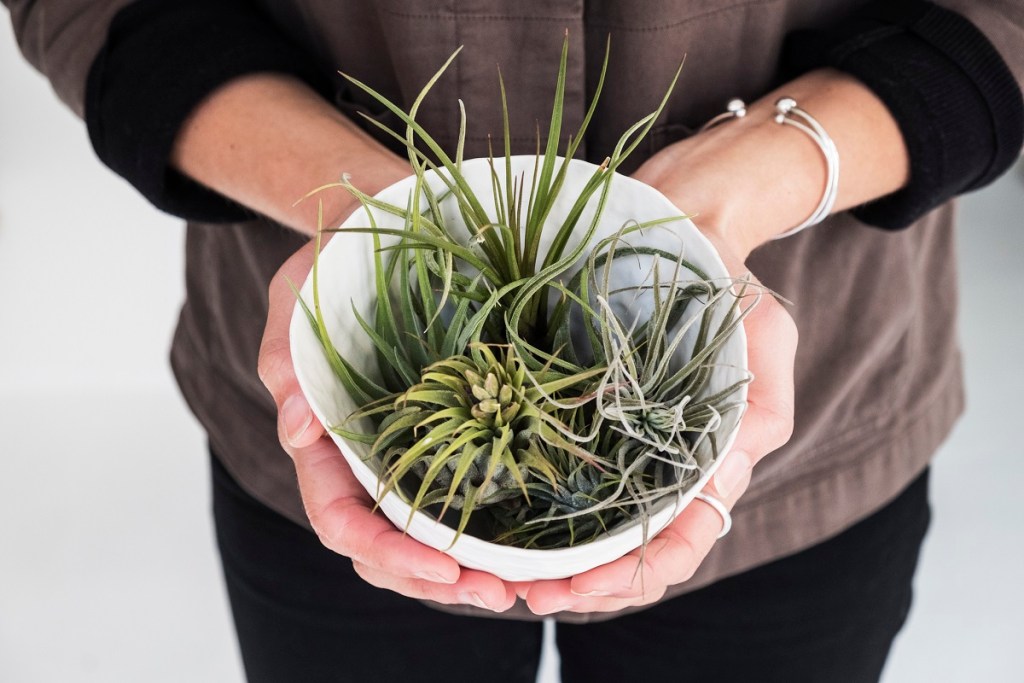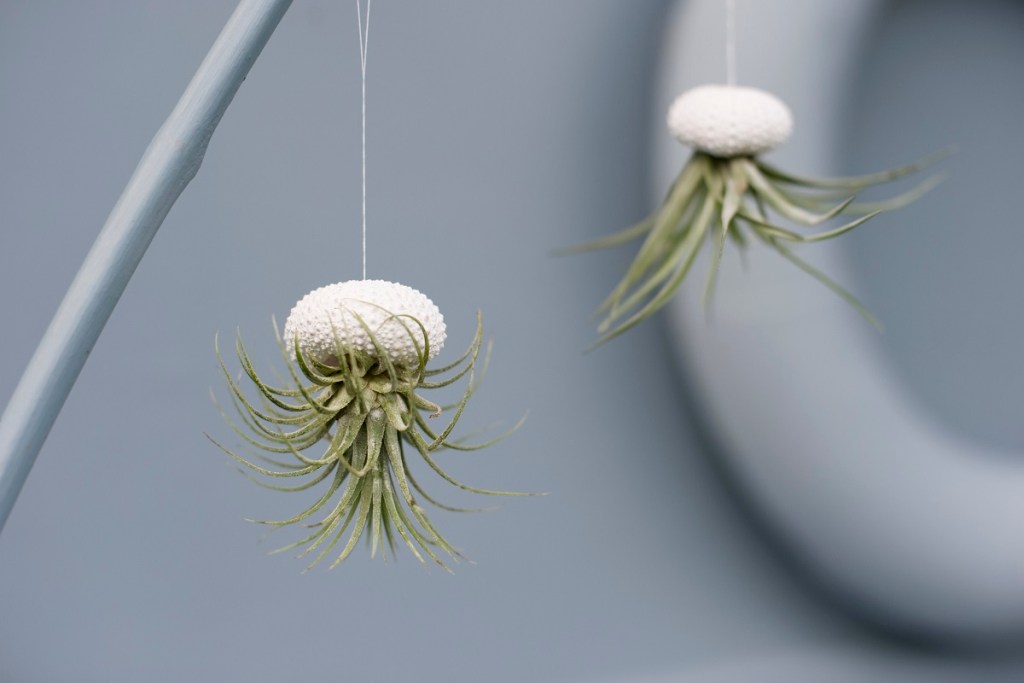Bulbous air plants, also known as Tillandsia bulbosa (or Tillys), are easy to grow and perfect for expert gardeners as well as those who wish they could garden but can’t seem to keep plants alive. Air plants as a whole elevate your space with their versatility since you don’t have to worry about where you’ll fit another pot; however, some are still more finicky than others, which makes the Tillandsia bulbosa a great place to start.

Why should you add them to your collection?
Bulbous air plants—like most air plants—are quite unique in their appearance. They have tendrils stretching out from a central bulb (which lends itself to the plant’s name) that are typically a beautiful green color. Believe it or not, the Tillandsia bulbosa can actually flower, though it only does so once in its lifetime. Prior to flowering, the tendrils will turn a purplish hue, so you’ll be able to see it before it happens!
Once it flowers, your bulbous air plant will start producing pups, which means a natural expansion to your plant collection if you choose to separate the babies from the parent plant. Otherwise, they’ll clump and turn into an even more luscious and unique Tillandsia bulbosa.
Better yet, the bulbous air plant comes in a few hybrid varieties and cultivars as well. Although the dark green is the most well-known, different Tillandsia bulbosas can come in an array of colors, shapes, and sizes from the small “Baby” variety to “The Perfect Blend” variety (a Tillandsia bulbosa crossed with a Tillandsia Lucille).
How to care for your Tillandsia bulbosa
Caring for your bulbous air plant is the same across any variety or hybrid, so you can have multiple kinds in your collection without worrying about memorizing variety-specific needs. Tillandsia bulbosas can adapt to most lighting; however, they don’t do well in partial sun and tend to favor indirect light to partial shade. They’re native to humid environments, so they’ll do better with light mistings; however, as long as the temperature in their home is above 55 degrees Fahrenheit, Tillandsia bulbosas will survive just fine.
Watering your bulbous air plant
Watering air plants is different than your average houseplant, though fairly easy to do. Like other air plants, the Tillandsia bulbosa absorbs water through their leaves as opposed to using a root system. The hair-like structures on their leaves (trichomes) are what help absorb the mositure; however, they don’t have as many as other air plants due to the fact their natural habitat is humid and moist.
You can give them a few light mistings each week, or you can choose to dunk them in water and shake off the excess. Although other air plants are recommended to be soaked in water, the lack of trichomes and hollow bulbs make this method less than ideal. The bulbs of the Tillandsia bulbosa are actually hollow and can trap water easily, rotting from the inside out. It’s best to avoid dunking, and always make sure water doesn’t sit or seep into the bulb.

Is it safe to put in soil?
Although the Tillandsia bulbosa is an easy-to-grow air plant, there’s one grave mistake you can make: putting it in soil. Air plants don’t use their root system and as such don’t function the same as other plants. Placing it in soil will keep moisture trapped in the hollow bulb, again leading to rot.
Air plants lend themselves to uniqueness and creativity! You can display them as effortlessly as you want, such as placing them on a shelf or creating a wire holder for them to sit in that you can hang on the wall. You can even make a nice terrarium for them or place them inside a conch shell. With the Tillandsia bulbosa, you aren’t bound by the walls of a terracotta pot.
Propagating your Tillandsia bulbosa
We mentioned earlier that bulbous air plants can be propagated via the pups that the mother plant starts to grow after flowering; however, should you decide to remove the offerings for a larger Tillandsia collection, do so at the proper time. You don’t want to remove them too early, they may not survive. The best thing to do is wait until the pup is around half the size of the parent plant, then gently remove them from the base. Be careful not to damage either plant.
You can, of course, also choose to leave them be and let them grow and clump with the mother. They’ll continue to thrive, turning into a much fuller-looking Tillandsia bulbosa and creating an even more unique appearance for the plant (if that’s even possible).
Editors' Recommendations
- Stunning Monstera plants that you should add to your indoor plant collection
- Beyond basil and cilantro, add these unique plants to your indoor herb garden
- 5 easy-care spider plant varieties perfect for any home garden
- Easy hoya plants to add to your indoor plant collection
- Are these common houseplants safe for your cat? Read this guide to find out the scoop




